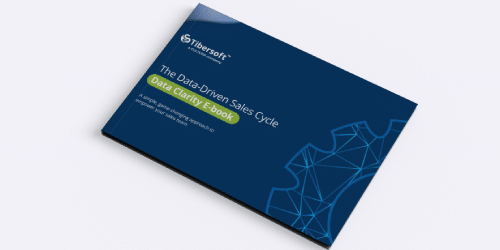A few months ago, Jennifer Post at the CORE Group and I were discussing CRM systems and how they relate to the foodservice channel. More specifically the idea of feeding vetted white space leads from Tibersoft to a CRM system as a sales campaign and in return, receiving sales call disposition data back into Tibersoft iQ.
We started to get excited about what that could do to tracking foodservice channel sales effectiveness. Then she said, “I’ve heard that the percentage of verbal orders that become actual physical orders is very low.” That got me wondering what that percentage is… Does anybody measure it today?
[row]
we all think, and a few of us know, that sales efforts are 70 – 90% wasted.
[/row]
The results reported were 12% and 14% respectively. This means that if sales received 100 verbal orders, 12-14 physical orders were actually received at the distribution centers. We then asked if the company hadn’t measured it, what did they think it would be. Those answers ranged from 7-30%.
Therefore, we all think, and a few of us know, that sales efforts 70%-90% wasted. What can be done about this? First, let’s update the adage, “you can’t improve what you can’t measure” to, “you probably won’t improve what you can’t measure easily.” This brings us back to OVOCR. It should be measured and tracked. It should not be a best practice; it should be the practice.
Tibersoft plans to make OVOCR easy to calculate on-demand by reconciling verbals with trade claims for foodservice channels. We’ll use iQ and the OpTRADE master operator database to setup expectations of future claims at the location and item level. Systemic tracking will make improvement possible because the measurement is easy. Analysis to identify actionable root causes will be very interesting. We all could think of good reasons why this is happening. The question is to what degrees? For example, will we find that certain operators, or certain products have higher or lower OVOCR? Is it stock outs? Is it seasonal?
We will soon be suggesting a standard format for systems to exchange information which will lead to the calculation of OVOCR as well as standards for the actual calculation.
The measure will not be 100% inclusive. Orders sold at list price can’t be tracked with rebate or billback claims. Each verbal order could be manually followed up with a phone call or visit. But that won’t be easy. At least the coverage will be what the Hale Group thinks the percentage of contract pricing will be…60% heading to 80%.
We’re thinking this is a big win and while we want to play an important role, we’d like as much of the industry to benefit from this capability as possible. The file formats will be offered as standards to the industry enabling anybody to implement them. Look for more details on our Foodservice Analytics LinkedIn Group, or contact us at info@tibersoft.com to learn more about how Tibersoft can improve your trade promotion management process.




